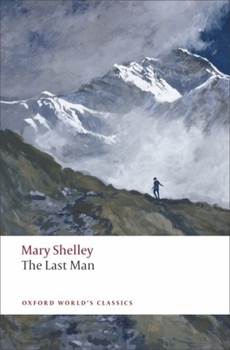The Last Man
Select Format
Select Condition 
Book Overview
A futuristic story of tragic love and of the gradual extermination of the human race by plague, The Last Man is Mary Shelley's most important novel after Frankenstein. With intriguing portraits of Percy Bysshe Shelley and Lord Byron, the novel offers a vision of the future that expresses a reaction against Romanticism, and demonstrates the failure of the imagination and of art to redeem the doomed characters. About the Series: For...
Related Subjects
Classics Fantasy Fiction Literature & Fiction Science Fiction Science Fiction & FantasyCustomer Reviews
Mary Shelley
Let His Death Crown His Life!
Death and disease level all men
The Last Man by Mary Shelley (1797-1851)
A beautiful book.
The Last Man Mentions in Our Blog

Did you know that the world’s first novel was written by a woman? Or that female authors had a hand in several literary genres, including sci-fi, dystopian, and rom-com? And guess who the world’s first billionaire writer was? Hint: Her most famous character’s initials are H.P. Read on to learn about history’s innovative literary ladies.





